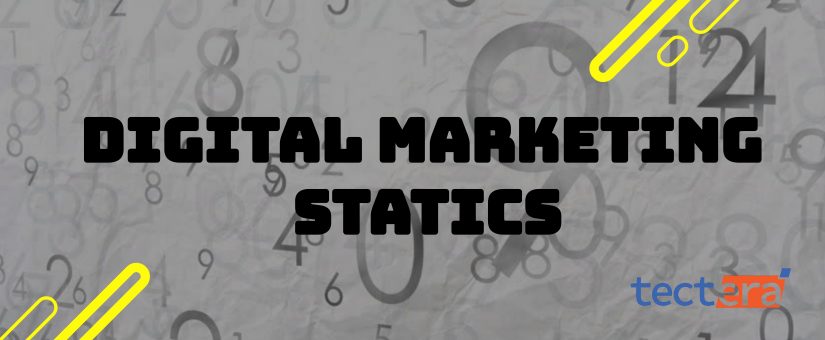Are you curious about digital marketing statistics for 2022? You’ve got to the correct place. The digital marketing industry is ever-evolving and dynamic. This is why you must keep up to date with industry developments. You should not allow your company to fall behind and allow your competitors to gain an advantage simply because they are equipped with the necessary knowledge. So, what’s the greatest technique to figure out what’s fresh in your field? Keeping up with crucial digital marketing statistics is the simplest approach to ensure your company remains relevant. These findings will assist you and your marketing team in benchmarking their own efforts and determining where more time and resources are needed to ensure digital marketing campaign success.
SEO Statistics
Search Engine Optimization (SEO) is one of the most essential investments for expanding your brand online, and when done effectively, it may cost very little, allowing you to use your marketing budget for other things. Many people consider SEO to be an art form that blends content production, branding, and promotion to naturally bring highly qualified visitors to your website via a search engine. And the statistics listed below indicate why SEO is so essential.
- According to more than 50% of marketers, Keyword rankings and organic traffic are the top ways marketers evaluate the performance of their SEO campaigns
Increased organic traffic to your site will result from improved keyword positions, as your results will be displayed more visibly at the top, where searchers are most likely to click. The number of visitors to your website is, of course, one of the most significant indicators in evaluating the performance of their SEO Campaigns. Monitor your organic search traffic every month to ensure that it is increasing. You may see some fluctuations owing to seasonality and other factors, but you must see an upward trend in organic search traffic to your site in general. Let’s proceed to the next Digital Marketing Statistics.
- The top 5 results in the Search Engine Results Page receive 67% of the clicks (SERPs)
Google’s response to a user’s search query is known as Search Engine Results Pages (also known as “SERPs” or “SERP”). Organic search results, sponsored Google Ads results, Featured Snippets, Knowledge Graphs, and video results are commonly found on SERPs. Your website has a high probability of being clicked on if it is in the top 5 SERPs organic results. Let’s proceed to the next Digital Marketing Statistics.
- In comparison to 3.9 percent on desktop, just 3.5 percent of e-commerce website visits via mobile result in purchases.
According to Episerver’s Dot-Com Report, smartphones have been increasing their percentage of web traffic for years. The fact is, it’s now statistically much more likely that eCommerce customers will interact with your website from a smartphone or tablet than from a desktop. Google factoring in a site’s mobile-friendliness to its search algorithm in March 2018 reflects consumer behavior shifting to visiting sites on smartphones from desktops. Let’s proceed to the next Digital Marketing Statistics.
- Content development is the most effective SEO strategy for 72 percent of internet marketers.
Creating content and putting it on your website isn’t enough. If you want to get the most of your SEO strategy, you need also consider how relevant it is. You have a better chance of gaining trust from your audience with strong content, which can lead to a customer.


Social Media Marketing Statistics
Marketers can connect with and engage potential customers when they are on social media sites like LinkedIn, Twitter, Youtube, Facebook, Instagram, and even some of the newer platforms like TikTok. According to Emarsys, 3.2 billion people use social media on a daily basis, accounting for 42 percent of the global population. If you’re good at social media marketing, you’ll be in good condition. You could reach a larger audience and help your company reach new heights if you have a good social media strategy and the power to make interesting content.
- 75 percent of B2B buyers and 84 percent of C-suite executives believe social media impacts their purchase decisions.
Many reasons can explain the impact of social media on client purchase decisions. Social proof, social media penetration, and online retail availability are just a few of them. However, making your brand stand out on social media is becoming increasingly tough. Focusing on the correct platform, developing innovative social media marketing campaigns, and implementing cutting-edge technology will help you stand out. Let’s proceed to the next Digital Marketing Statistics.
- Every day, people spend an average of 142 minutes on social media.
The vast majority of consumers spend a significant amount of time online or otherwise connected to the internet. The large number of people who use the internet on a regular, if not daily, basis, as well as the vast amount of time they spend online, reveals the importance of digital marketing for business and brand growth with social media usage accounting for a significant portion of this online investment. These figures show that ignoring potential online customers means ignoring your business and that internet marketing is the key to expanding your brand and customer base. In fact, with a truly worldwide audience, and especially with social media, your marketing messages’ potential reach is nearly limitless.


Ecommerce Statistics
- By 2023, E-commerce is predicted to have a market share of 22.3 percent of total retail sales worldwide.
Global retail e-commerce sales were estimated to be around 4.9 trillion dollars in 2021. Over the next four years, this value is expected to increase by 50%, reaching $7.4 trillion by 2025. A key reason for this is the massive shift to online retail that has occurred as a result of covid. Retail eCommerce sales will expand by double digits through 2023, accounting for a growing share of total retail sales globally. It is forecast that global retail eCommerce sales would reach $6.169 trillion by 2023, accounting for 22.3 percent of overall retail sales, up from $3.351 trillion and 13.8 percent in 2019. Let’s proceed to the next Digital Marketing Statistics.
- Google contributes for more than two-thirds of all e-commerce website traffic, with organic traffic accounting for 43% and CPC for 26%.
The paid search team, which handles PPC campaigns, and the SEO team, which focuses on organic search, are often two independent divisions at many businesses. They run in parallel, sometimes even competing with one another. In reality, Google’s own research has discovered that the two function together. Multiple studies have shown that SEO has an impact on the number of clicks PPC advertising obtain. When a site has strong organic search results, Google has discovered that their PPC advertising on the same SERP will have a higher click-through rate. Another study discovered that the phenomena can also work in reverse, where sponsored search might help organic advertising perform better.


Editorial Staff at Tectera are experts on web design, SEO, social media and other digital marketing channels.





